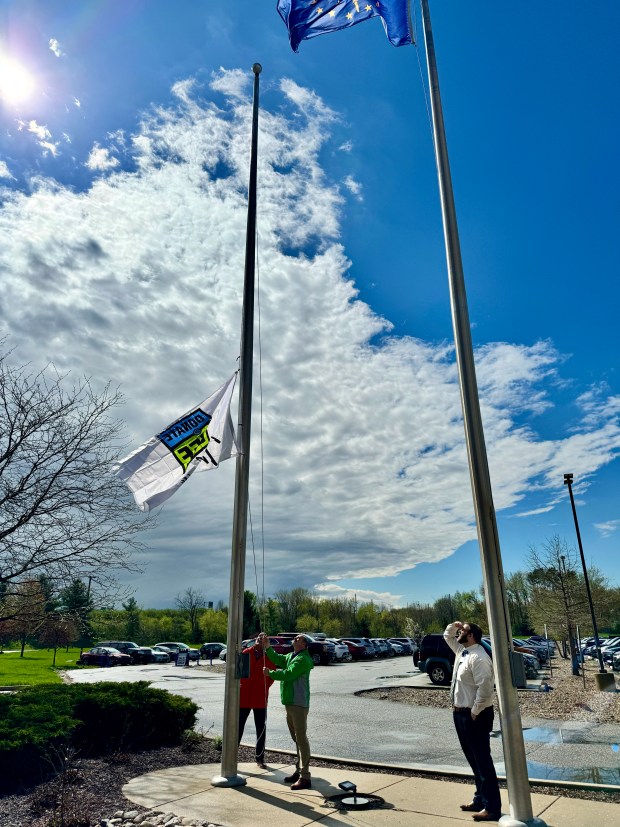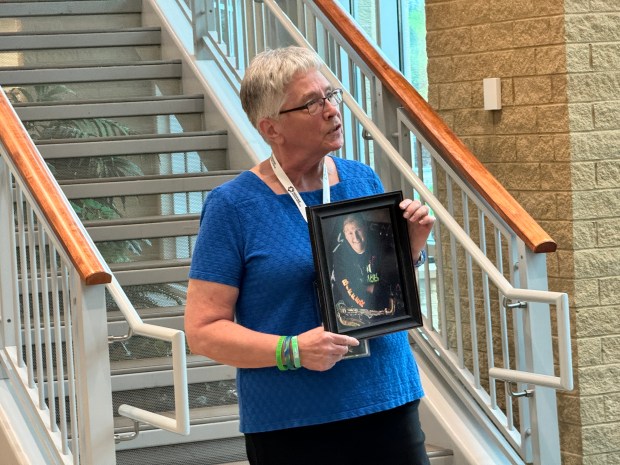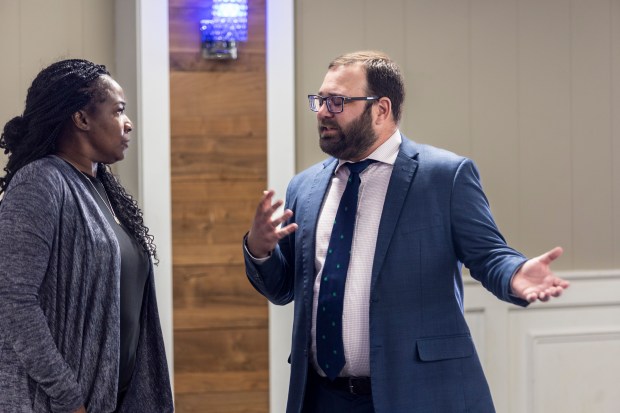Organ donors’ families and Northwest Health – Porter officials made the case Thursday for signing up as organ donors.
For Stephanie Irving, of Palos Heights, Illinois, it was her first visit to the hospital since October, when her son died there. His driver’s license didn’t reflect a choice to become an organ donor but Irving made that decision on his behalf.
“I feel my son is now a hero, being an organ donator,” she said.
Irving is now raising her 5-year-old granddaughter, who insists on sleeping every night with a teddy bear that has a recording of her late father’s heartbeat.
Thursday’s appearance, on the six-month anniversary of her son’s death, was the first time Irving spoke as an Indiana Donor Network advocate.
Rhonda Berger, of Winamac, showed a framed portrait of her daughter Jenifer Spurgeon, 19, who died in an apartment fire in Fort Wayne.
Spurgeon was studying at International Business College to become a veterinary technician.
Berger recalled discussing organ donation with her daughter before she left home to attend college. “Why wouldn’t I? If something would happen to me, why would I need them?” Spurgeon told her mother.
Spurgeon visited the cats and dogs every night, Berger said, to assure them she was studying to be able to save their lives.
At 5:05 a.m. on Jan. 23, 2007, Berger got the phone call no one wants to receive. “Mom, there’s a fire and we can’t get out,” Spurgeon said.
Berger urged them to seek another way out, but they couldn’t. Firefighters retrieved Spurgeon and her two trapped roommates from the burning building.
“I lived 80 miles away, so it took me a while to get there,” Berger said.
At the hospital, the doctor said they worked on Spurgeon for more than 30 minutes trying to rescue her. She went in and out of a hyperbaric chamber in hopes of boosting her oxygen but the doctor expected there would be brain damage. Neurological tests showed no response. Spurgeon was pronounced dead at 2:30 p.m.
Berger met with an Indiana Donor Network representative. Spurgeon’s lungs, skin and tissue were damaged by the fire, but her kidneys and liver could be used. They went to three recipients.
A 62-year-old received Spurgeon’s right kidney. Afterward, the recipient wanted to see Spurgeon’s hometown and extended family. “She got an extra 13 years and two days on her transplant,” Berger said.
The left kidney went to a student who was put on the transplant list while a junior in high school after being on dialysis since eighth grade. Berger was invited to his graduation and open house. The recipient turns 33 in June.
Spurgeon’s liver went to a recipient in their 50s. “Emotionally, they just weren’t ready” to meet the family, Berger said. “He got an extra five years to make memories with family and friends.”
Parents Ron and Laura Peters, of St. John, were at the hospital Thursday in memory of their daughter, Meghan Manning, of Carmel, who died suddenly of an undiagnosed respiratory condition.
“She was able to save up to give lives with her donation,” Laura said.
Ron said he and Laura were setting up a table by the cafeteria so others could sign up to become organ donors. “This is our first event. It’s exciting,” Ron said.
Dr. James Leonard, the hospital’s CEO, served as an emergency room physician for years and saw firsthand the importance of organ donations.
“It hits home. It absolutely touches my heart” to hear the families’ stories, he said.

In 2023, the hospital saved 14 lives with donated organs, Leonard said. In addition, 1,994 patients’ lives were improved with tissue and cornea transplants.
ICU Director Susan Coryell, who serves as the hospital’s donor chair, said one donor’s organs can save eight lives. One tissue donor can help 75 people. One cornea donor can help two people.
“Without the donor families and donors, none of this would be possible,” said Amanda Kuczmanski of the Indiana Donor Network. She knows firsthand, as a member of a recipient’s family, the importance of donors’ parting gifts to others.
Doug Ross is a freelance reporter for the Post-Tribune.




